https://www.youtube.com/watch?v=RhpN75M8TNI
How to solve a Rubik's Cube (Second Layer Tutorial) _ Part 3
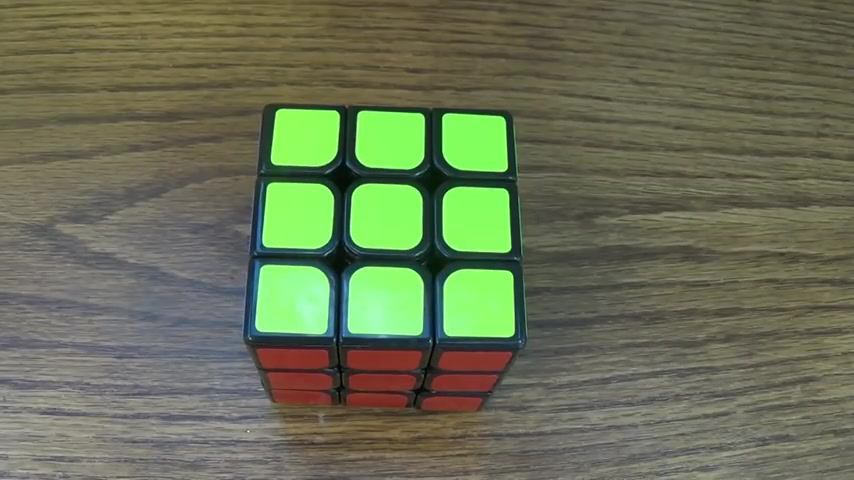
May the cube lead you to the cross .
Um The video is finally here .
You guys wanted to learn how to do the four by four .
And I I am finally filming this here .
It is um you , this is the easiest way to learn how to do the four by four .
There's only six algorithms to learn super easy .
If you've already seen the two by two , you learned two of the algorithms already .
OK .
That's if you've done this one , I've done a video on this , check it out .
Um If you see in my three by three video , you've learned an additional two algorithms , you can do this with only four algorithms .
And by the way , algorithms are not a big deal very easy to learn .
Uh they're just patterns and this one , you're gonna need to learn an extra two .
OK .
Um There the one thing about the four by four that you need to know is there's no center .
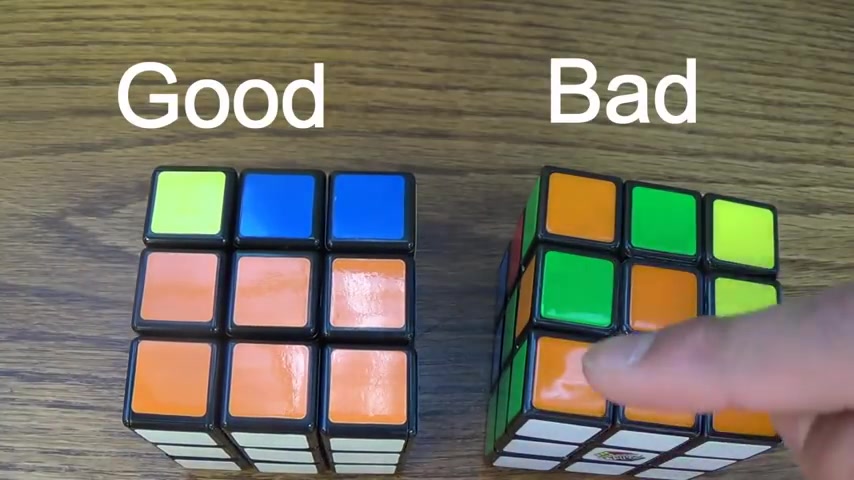
And then , so this is the bad one because the middle one isn't oriented properly .
And also in the middle , you , you don't want any yellow pieces because when you complete it in the middle and what is on the bottom in the middle , there aren't any um yellow and also in the middle , they should all be matching .
This is good because or this is orange and orange , orange , orange , that's matching green , green , green , that's matching red , red , red , that's matching blue , blue blue that's matching and this one , no , no , no , no , no , no , no , no , no and so on .
So um yeah , I'll be right back to I'll scramble , I'll scramble my tube and I'll be right back to explain it in more detail .
OK ?
So um I scrambled it and then I finished the doing the first layer .
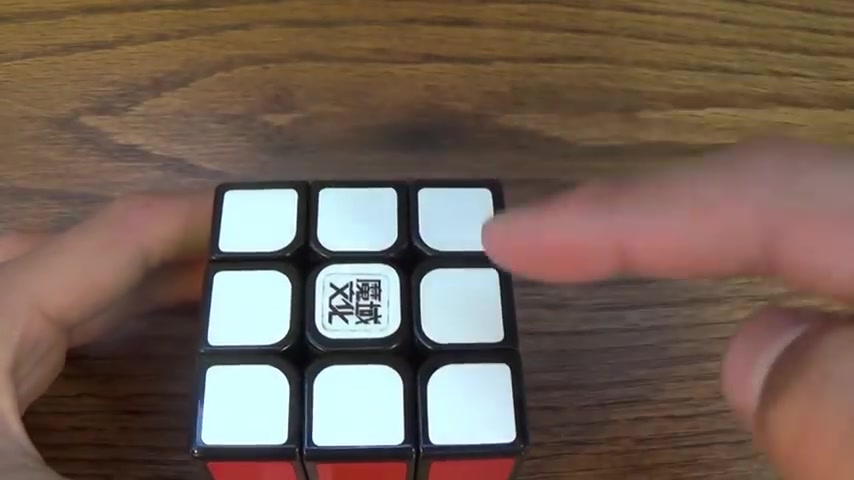
So and then , so that now put the white um side on the bottom .
And then , so now to finish um to do well , actually , this is the first like episode that you start learning um algorithms .
And if you don't know what an algorithm is , it's basically like a sequence of moves that does one thing .
So when we do algorithms , we use letters .
So this would be an F this would be a um F counter clock or counter .
Yeah , I don't know .
And then this will be you and this is I just call it prime .
So this is U prime , this is R , this is our prime , this is L and this is L prime .
OK .
Now , so let's get to it .
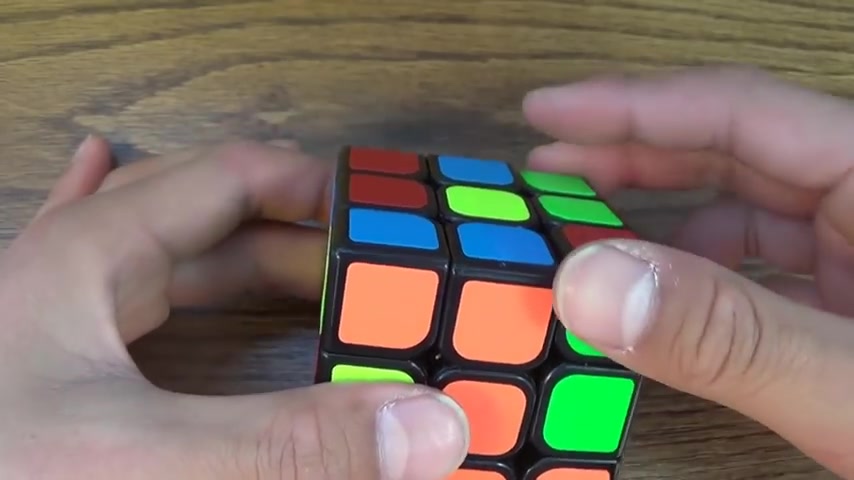
So this one you have and when you're choosing an edge , make sure it's always on the top layer .
So on the yellow side and then this make sure it's always in the edge and make sure it's an edge without a yellow um color in any of the side .
So this one's good .
This one's good .
This one's good , but this one's not because there's a yellow on either one of them .
So they just choose this one .
So first you have to match it with the color that's facing you .
So now it's matching and you have to think about this .
So this is the green .
Do you want to make the green go on this side or do you want to make the green go on this side ?
Well , make the green go on this side because you can tell that this is the green side , but this isn't .
So to do this , it's basic , it's really easy , you face it away .
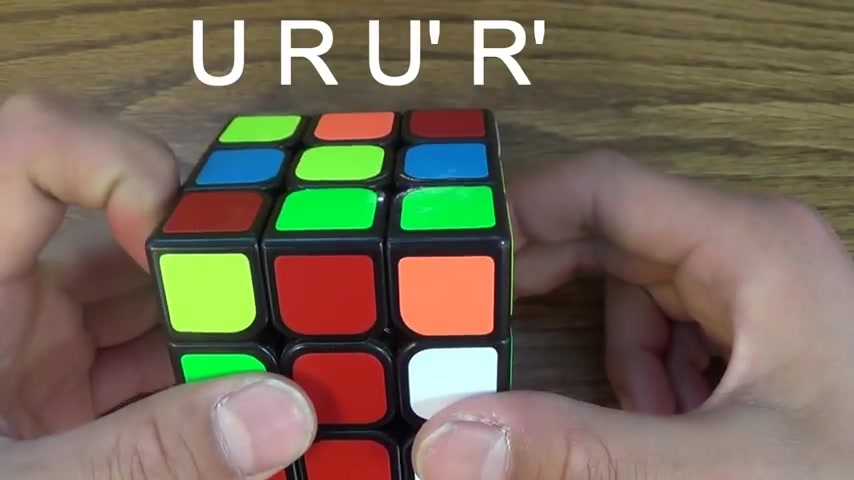
So you , and then you make it go up or U prime and R prime , then um I'll have the algorithm right here .
So then you just put it back in normally .
So you turn it upside down again and then to put this in , you just do it like a normal um pair .
So you do , you move it out of the way you put it down , you put it in , you put it back in .
OK ?
Then um then please keep in mind that this isn't the fastest way to do it , but it is probably the easiest way to do it .
Now .
Um we can't do this one because blue and yellow and we don't want any yellows .
Also , we can't do this because it's orange and yellow .
There's a yellow .
Can we do this ?
Yes , because this is blue and red .
There aren't any um yellows .
So you have to align these two .
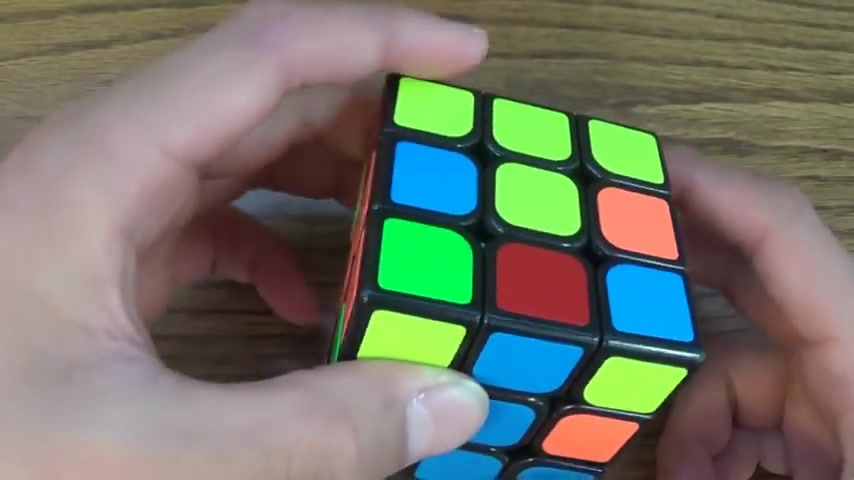
So you have to create the center very similar to the two by two where you have to make sure that the colors are on the same size , like the red , opposite of red is orange , opposite of red is orange .
Um If you mess it up on the four by four and you put uh blue next to red .
Uh It , it won't work out .
So um we do start with the centers .
All right .
So guys , we're gonna get right into it and basically it's gonna be just like doing a three by three once we get through phase two .
So let's go ahead and mix this up and we'll mix it up real good .
And this is the easiest four by four video , most four by four videos that you're gonna see out there are giving you all kinds of complex algorithms and um just crazy amounts of algorithms to learn .
Uh If you've already done the three by three , this is gonna be fairly easy .
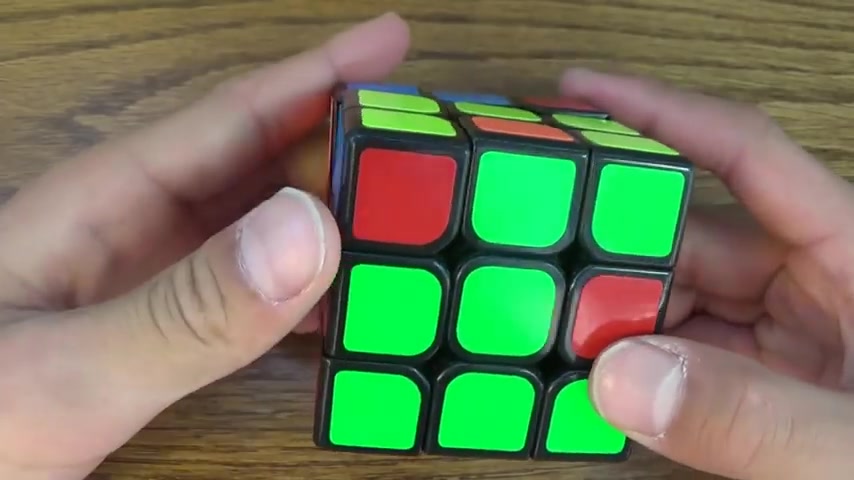
You just need to learn a couple of little things that are uh gonna be different than what we've learned already on the three by three and the two by two .
So this is pretty well mixed up .
And now what you want to do is you want to create the centers as you can see .
Uh there are no centers .
So we need to create it .
So we're gonna start with , I always like to start with yellow and white since we've worked with yellow and white in the previous videos .
Let's go ahead and try to do the white .
So as you can see , I've got two whites here , I just need to find the other whites and that's pretty easy right there .
I've got three for the corner .
So we're gonna do the centers , there's the other white and the way you do this is if you , I wanna bring this white over here , I'm going to line it up with two .
So make sure you've got two whites and we're gonna bring this white over here .
So you always want , wanna have two .
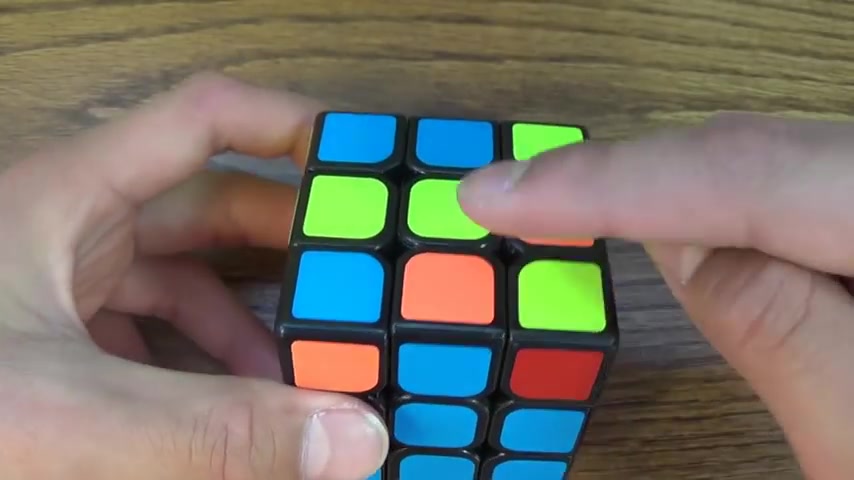
So as soon as I bring this over and it needs to match up with this , all I do is turn this like this and bring it back and there you go .
That's the first one .
Now what's opposite of white is yellow .
So we're gonna go to the other side .
Luckily we've already got two yellows there .
Um Now we're gonna go ahead and find two more yellows .
So I've got a yellow right here .
I need to bring that over .
So I'm gonna line up the yellows so they line up with this yellow , I'll bring it up like that .
Turn get it out of the way and bring the yellows back .
See .
So we're getting the centers ready and as you can see , it doesn't mess up the back .
Ok .
It doesn't mess up your other um , centers that we already did .
Ok , let's find the other yellow there it is .
So what do we do ?
We line it up with two so it's lined up here .
Um , now this one doesn't line up , see .
So that's not gonna work .
So line it up with another two .
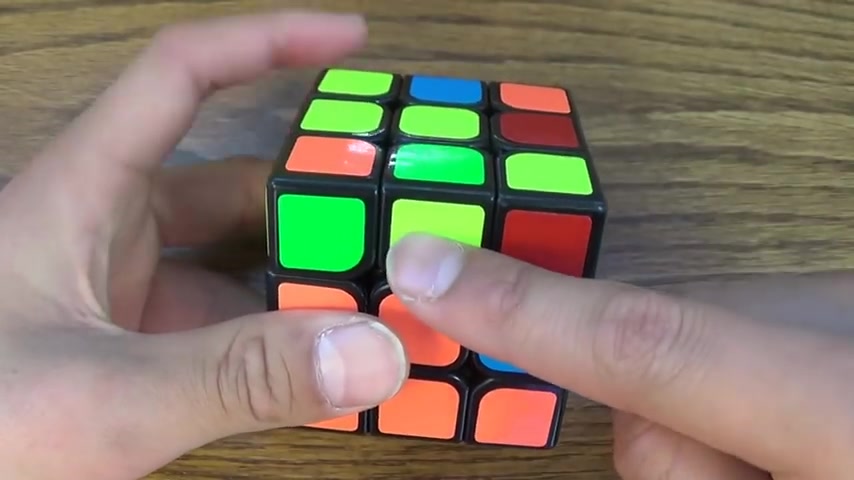
So we'll turn this around like this .
We're gonna line it up with these two .
See , now when I turn it , it lines up , once it's lined up , turn the , turn the top and bring it back .
Now we've got yellow and we've got white .
Now keep doing this .
Um , if you don't get it at this point , just continue watching because we're gonna do the same thing with another color .
Here's where it gets tricky though .
We need to know where are we going to do the next color ?
I always like to take the yellow and put it on top whites on the bottom and make this blue .
OK ?
Um And it can be in any of these .
So I'm gonna find a side that has the most blues , they all have one .
So it's fine .
We'll just make this uh face that I'm working with blue and then to the right , it's gonna be red .
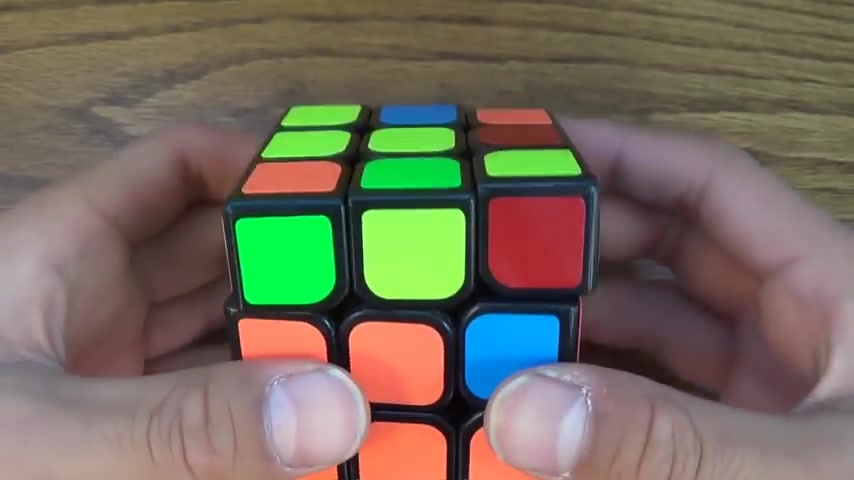
You , you just bring it to the with um you wanna bring this , you wanna replace this one with this , so you just do the same thing , Uru prime R prime and then you just put it in normally , then the piece that you , that was in it gets out which because you replaced it and then now you can put it in normally .
So since the blue goes that way you do Uru Prime R prime , then it ha it makes like a pair and then again , you just put it in normally .
So um yeah , that's how you do the second late er of the three by three , Rubik's Cube .
I hope you enjoyed this video .
Don't forget to um subscribe , comment and like , and um I'll see you in my next video .
Are you looking for a way to reach a wider audience and get more views on your videos?
Our innovative video to text transcribing service can help you do just that.
We provide accurate transcriptions of your videos along with visual content that will help you attract new viewers and keep them engaged. Plus, our data analytics and ad campaign tools can help you monetize your content and maximize your revenue.
Let's partner up and take your video content to the next level!
Contact us today to learn more.